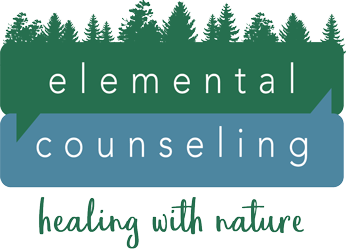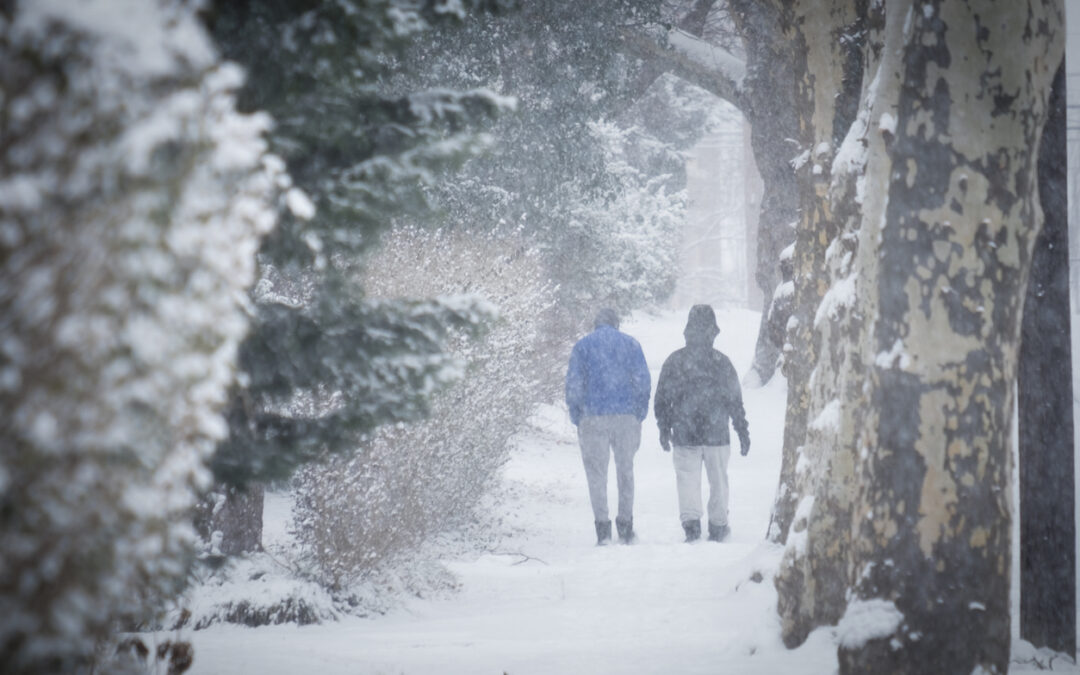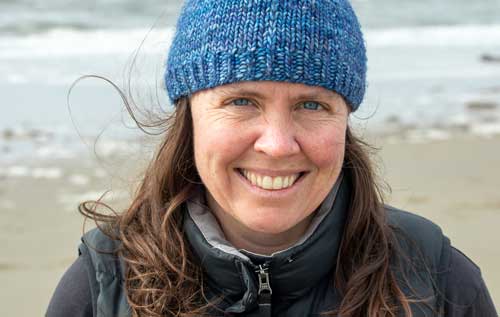By winter, I mean real winter.
A lot of ecotherapists and nature based therapists practice in warmer climates than northern New England. (Obviously, as most climates are warmer than northern New England.) I received my own training in this modality in California, where there are several nature based therapists. Lots of the published research comes out of the UK–cooler than California, but surely more temperate than Maine. Consequently, there are a lot of parts about how to do my job in a snowy, icy winter that I’m making up as I go along. I’ve learned a lot, though, particularly in this pandemic winter when indoor ecotherapy is a less viable option.
The Good
- Sometimes people are surprised by how comfortable they can be outdoors in the winter and how good they feel getting their bodies moving in what is typically a more sedentary time. This can be a powerful learning and easy addition to everyday well being.
- There are so many interesting things to notice and connect with–endlessly fascinating ice formations, tons of birds, mushrooms growing when nothing else seems to, all the varieties of snow, and shapes, textures, and silhouettes that get lost in the rich visuals of spring and summer.
- Playing, sculpting, and writing in the snow can be quite illuminating (and fun for all ages).
- There is abundant opportunity to reflect on how plants, trees, and non human animals survive, adapt, and even thrive in adverse conditions.
- Easy exploring, as we can wander off trail and follow our footprints back. It’s a great way to discover new perspectives and angles.
- A different appreciation for comfort and ease. An ability to play in real time with how we can create that for ourselves.
- All the different ways the light dances in the winter as the sun is lower in the sky. Often, I get to see sunrises and sunsets with clients in the winter, and those are powerful moments. (This would never happen in a Maine summer, as I have no interest in working at 4:30AM or 9PM!)
- There is something about being out in cold weather, immersed in a frozen and sometimes stark landscape, that seems to bring a different kind of clarity to the work of therapy. I can’t really describe this well…but I definitely find repeatedly people forming sharp insights or experiencing distinct internal shifts that don’t quite happen the same way during warmer months.
The Hard
- Ice. Ice can definitely be a challenge for safe mobility. Boot grippers that make ice safe to traverse are loud, making hearing each other potentially challenging.
- Cold clients. I am a firm proponent of the ‘no bad weather, only bad clothing’ motto. However, not everybody has or remembers to bring the clothing to stay substantially warm and comfortable. In this case, meeting outdoors is not a good use of our time. The emotional work of therapy takes a lot of energy. We can’t be spending so much energy on maintaining physical comfort that we lose the capacity to do the emotional work.
- Cold therapist. I have the right clothes, but after enough time out there I still get cold, especially when what best serves a client is being relatively still. I learned, and continue learn, how to layer, schedule, and thaw between sessions. It takes a different kind of preparation work in than warmer months to be fully present in session and not waste energy on temperature regulation.
- Narrower trails, caused by the typical single file trail walking people do in the winter. This can make it hard to see and hear each other in some places. Choosing trails that have enough width and enough foot traffic to be easily traversed is crucial!
- Unpredictable conditions can cause surprises. I live only 10 miles from most of the trails on which I meet clients. Because I live inland and most of the trails on which I work are coastal, there can be a substantial difference in the weather, snowfall, ice cover, etc. between the two. The trunk of my car is full of different layers and weights of clothing and snowshoes and crampons and more. This type of logistical preparation is critical for me to be able to be present for clients no matter the trail and weather conditions.
The Current Compromise
As you can see, there is genuinely both a lot of good and a lot of hard in doing ecotherapy outdoors in a Maine winter. I appreciate this reality. It leads me naturally to the solution of being flexible about where therapy takes place during winter months. The good and the hard reinforce the importance of paying close attention to what best serves a clients goals on any given day.
What I’m excited to keep exploring (especially after the pandemic when we can more easily be flexible!) is how we really start listening and responding to the needs of our animal bodies in the winter. Sometimes, it feels so important to be out in the crisp, cool air, moving briskly, creating our own warmth, and finding some energy and spark through direct contact with winter. Sometimes, though, we might need to respect more of a hibernation urge. Therapy in those moments may need an indoor space where we can be warm, cozy, and easily able to devote all our energy to going deep inside.
All of this Makes Ecotherapy in Winter Pretty Special…
I love how ecotherapy in a place like Maine gives us a chance to connect deeply with seasons. And, in turn, how we as individual human animals not just acknowledge, but deeply embrace the rhythm of the seasons by learning how our own system responds to different seasons. Doing this work has profoundly deepened my own experience of seasons, and winter in particular. I love that I get to keep learning, along with my clients, about what it means to be a human (the only animal I know of who survives winter entirely by relying on their smarts to create shelter, warmth, and food) in the winter.


